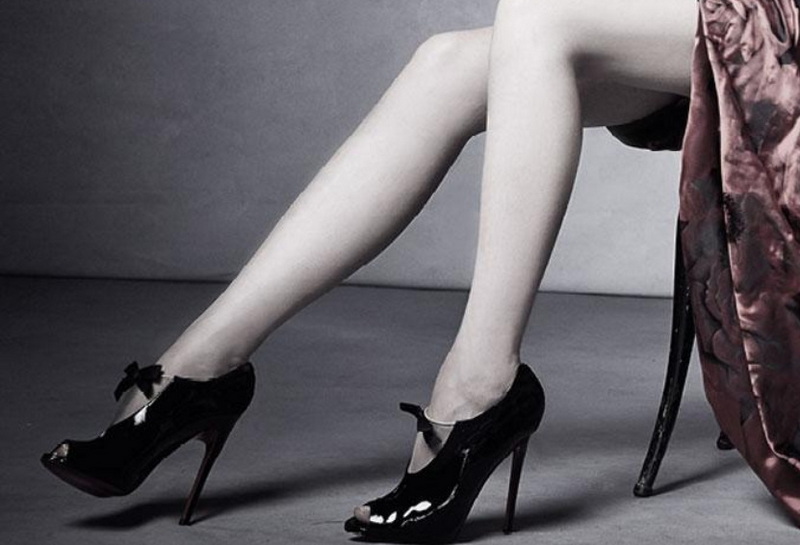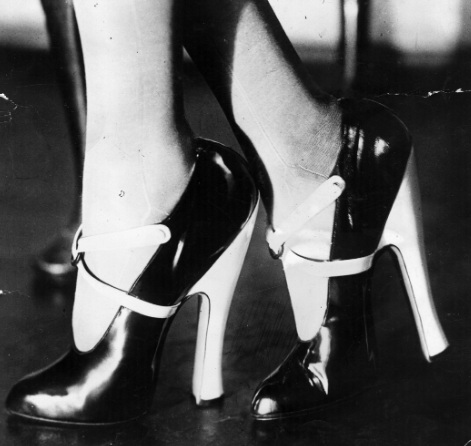Content Menu
● The Historical Evolution of High Heels
>> From Persia to the European Courts
>> The Shift to Women's Fashion
● The Psychology Behind High Heels
>> Confidence Boost
>> Attractiveness and Sexuality
● Cultural Significance of High Heels
>> Symbol of Femininity
>> Professional Power Dressing
● The Physical Effects of Wearing High Heels
>> Posture and Gait
>> Health Concerns
● High Heels in Modern Fashion
>> Diversity in Design
>> Comfort Innovations
● The Feminist Perspective on High Heels
>> Symbols of Oppression or Empowerment?
>> Changing Attitudes
● Conclusion
● FAQ
>> 1. Are high heels bad for your health?
>> 2. Why do men find women in high heels attractive?
>> 3. Can wearing high heels improve confidence?
>> 4. Are there comfortable high heels?
>> 5. How have high heels impacted women's rights and feminism?
● Citations:
High heels have been a staple of women's fashion for centuries, evolving from practical footwear to powerful symbols of femininity, status, and sexuality. This article explores the various messages that high heels convey about the women who wear them, delving into their historical significance, psychological impact, and cultural implications.

The Historical Evolution of High Heels
High heels have a rich and surprising history that dates back to ancient times. Originally designed for practical purposes, they have transformed into a fashion statement that speaks volumes about the wearer.
From Persia to the European Courts
The origins of high heels can be traced back to 10th century Persia, where they were worn by cavalry soldiers to secure their feet in stirrups[6]. As Persian culture spread to Europe through trade and diplomacy, the European nobility embraced high heels for their exotic appeal, transforming them from practical footwear into status symbols[6].
In the 17th century, both men and women in European aristocracy wore high heels as markers of status and privilege. French King Louis XIV took this trend to new heights, often wearing red-soled heels reserved for members of his royal court[6].
The Shift to Women's Fashion
As the Enlightenment took hold in the 18th century, men's fashion shifted towards simplicity and utility. High heels became primarily associated with women's fashion, symbolizing femininity and elegance[6]. This shift marked a significant turning point in the history of high heels, as women began to view them as symbols of grace and sophistication.
The Psychology Behind High Heels
Wearing high heels can have a profound psychological impact on women, influencing their self-perception and the way others perceive them.
Confidence Boost
Many women report feeling more confident and powerful when wearing high heels. The added height and altered posture can create a sense of authority and self-assurance[1]. This psychological boost can be particularly beneficial in professional settings, where confidence is often equated with competence.
Attractiveness and Sexuality
High heels have long been associated with female attractiveness and sexuality. Research has shown that men perceive women wearing heels as more attractive potential mates[7]. The altered gait and posture created by high heels can emphasize certain physical attributes, contributing to a more alluring appearance[1][3].
Cultural Significance of High Heels
High heels carry different meanings across cultures and have played various roles throughout history.
Symbol of Femininity
In many Western cultures, high heels are strongly associated with femininity. They are often seen as an essential element of formal and glamorous attire for women[3]. This association has led to high heels becoming a powerful symbol of female identity and expression.
Professional Power Dressing
In the 1980s, high heels became synonymous with power dressing for women entering corporate environments. Paired with tailored suits, heels gave women a way to project authority in male-dominated spaces[6]. This era demonstrated that the history of high heels is as much about cultural shifts as it is about style, reflecting the empowerment of women in the professional world.

The Physical Effects of Wearing High Heels
While high heels can make a powerful statement, they also have significant physical effects on the wearer's body.
Posture and Gait
High heels alter a woman's posture and gait, creating what many perceive as a more feminine and attractive walk[1]. They adjust lumbar curvature, increase pelvic tilt, and enhance the appearance of the chest and hips[7]. However, these changes can also lead to discomfort and potential long-term health issues.
Health Concerns
Prolonged wearing of high heels can lead to various health problems, including foot pain, back issues, and muscle strain[1]. Despite these potential risks, many women continue to wear high heels for their aesthetic and psychological benefits.
High Heels in Modern Fashion
Today, high heels remain a prominent feature in women's fashion, with designers continually pushing the boundaries of style and comfort.
Diversity in Design
Modern high heels come in a wide variety of styles, from classic pumps to avant-garde designs. This diversity allows women to express their personal style while still enjoying the benefits associated with wearing heels[7].
Comfort Innovations
Recognizing the importance of comfort, many designers are now focusing on creating high heels that are both stylish and wearable. Innovations in materials and construction techniques are making it possible for women to enjoy the aesthetic benefits of high heels with reduced discomfort[12].
The Feminist Perspective on High Heels
The relationship between feminism and high heels has been complex and evolving.
Symbols of Oppression or Empowerment?
Some feminist perspectives view high heels as symbols of oppression, arguing that they restrict women's movement and prioritize appearance over comfort[8]. However, other feminist thinkers believe that high heels can be tools of empowerment, allowing women to express their sexuality and authority on their own terms[9].
Changing Attitudes
Modern feminist thinking has begun to embrace a more nuanced view of high heels. Many now believe that the choice to wear heels can be a form of self-expression and personal empowerment, rather than a submission to societal expectations[9].
Conclusion
High heels are more than just a fashion accessory; they are powerful symbols that can convey various messages about the women who wear them. From their origins as practical footwear for Persian cavalry to their current status as icons of femininity and power, high heels have played a significant role in shaping perceptions of women throughout history.
While they can boost confidence, enhance attractiveness, and project authority, high heels also come with physical challenges and complex cultural implications. The decision to wear high heels is ultimately a personal one, influenced by individual preferences, cultural norms, and practical considerations.
As fashion continues to evolve, so too will the role of high heels in women's lives. Whether viewed as tools of empowerment or symbols of oppression, high heels remain a fascinating aspect of fashion history and contemporary culture, continuing to spark debates about gender, sexuality, and personal expression.

FAQ
1. Are high heels bad for your health?
Prolonged wearing of high heels can lead to various health issues, including foot pain, back problems, and muscle strain. However, occasional use and proper foot care can mitigate these risks. It's important to balance style with comfort and listen to your body's needs.
2. Why do men find women in high heels attractive?
Studies have shown that men perceive women in high heels as more attractive due to the altered posture and gait. High heels can accentuate certain physical attributes and create a more feminine silhouette, which many men find appealing.
3. Can wearing high heels improve confidence?
Many women report feeling more confident when wearing high heels. The added height and altered posture can create a sense of empowerment and authority. However, confidence ultimately comes from within, and it's possible to feel confident in any type of footwear.
4. Are there comfortable high heels?
Yes, many designers are now focusing on creating more comfortable high heels. Innovations in materials, construction techniques, and ergonomic designs are making it possible to wear heels with less discomfort. However, what feels comfortable can vary from person to person.
5. How have high heels impacted women's rights and feminism?
High heels have had a complex relationship with women's rights and feminism. While some view them as symbols of oppression, others see them as tools of empowerment. Modern feminist perspectives often emphasize personal choice and the ability to wear high heels as an expression of individual style and power.
Citations:
[1] https://wellbeingmagazine.com/high-heels-obsession-why-women-cant-stop-wearing-heels/
[2] https://everydayfeminism.com/2015/06/why-wear-high-heels/
[3] https://liminul.xyz/high-heel-feminism/
[4] https://www.istockphoto.com/photos/red-high-heels
[5] https://www.youtube.com/watch?v=xZxmMQCZsu4
[6] https://www.walkingonacloud.ca/blog/the-evolution-of-high-heels-from-royal-courts-to-the-catwalk/
[7] https://www.enricocuini.com/blog/5-reasons-high-heels-make-women-look-more-attractive
[8] https://www.fastcompany.com/90775177/the-long-history-of-heels-from-a-symbol-of-mens-power-to-womens-burden
[9] https://www.articlesonhistory.com/high-heel-shoes.php
[10] https://www.istockphoto.com/de/bot-wall?returnUrl=%2Fde%2Fphotos%2Fhigh-heels
[11] https://www.youtube.com/watch?v=uQI9GOyluhE
[12] https://shoefairyofficial.com/blogs/news/the-history-of-high-heels-10-facts-that-surprise-you

















